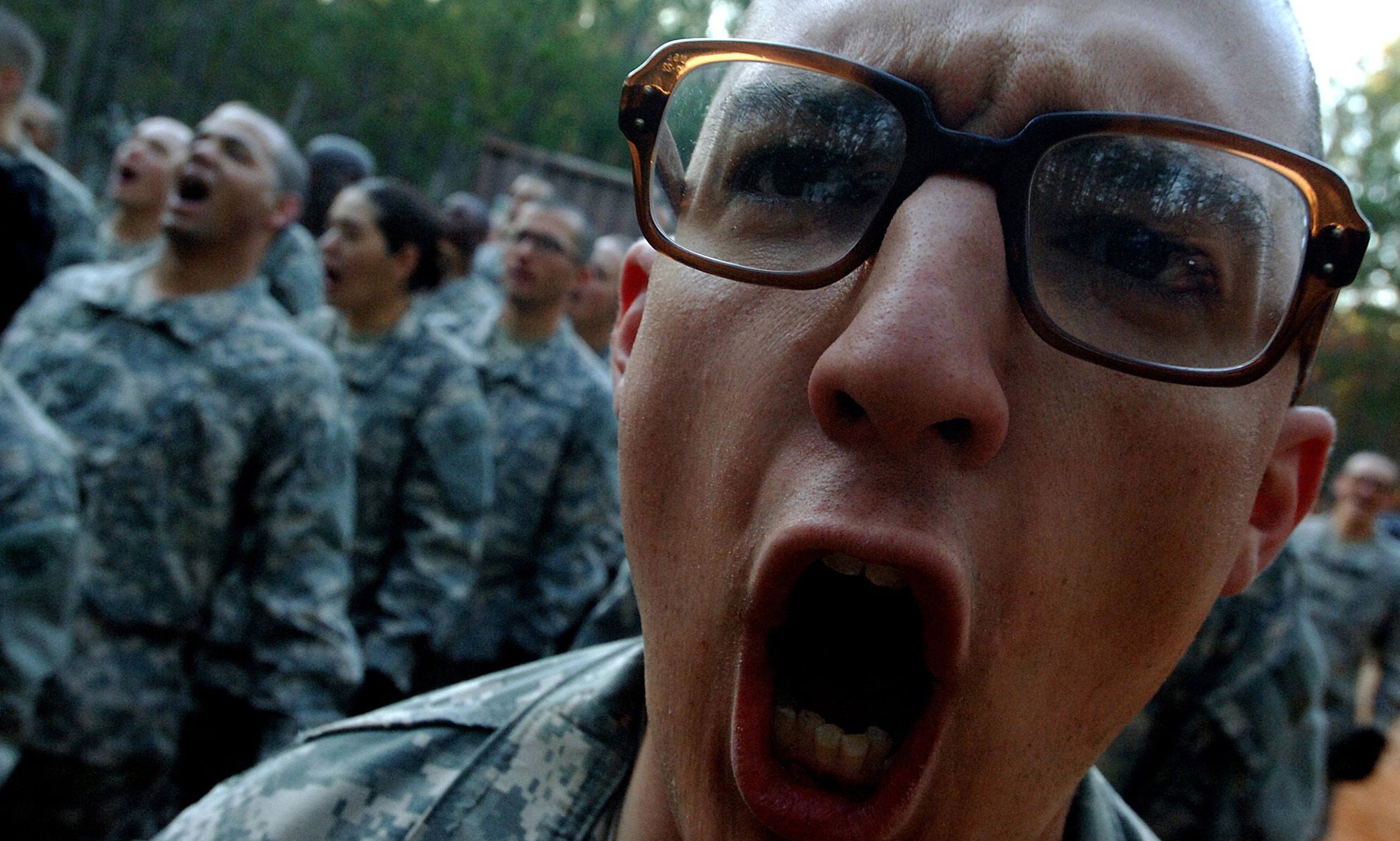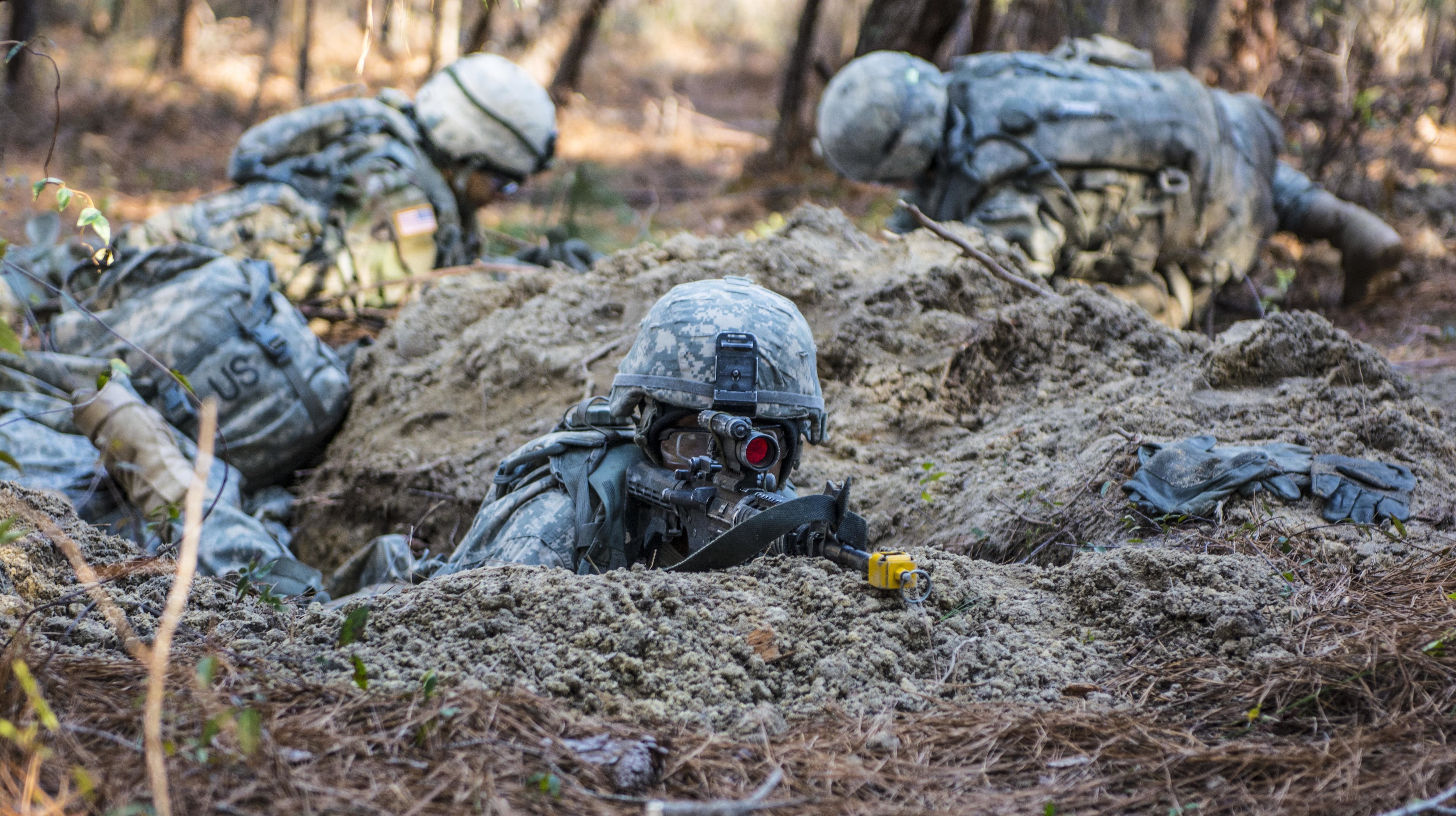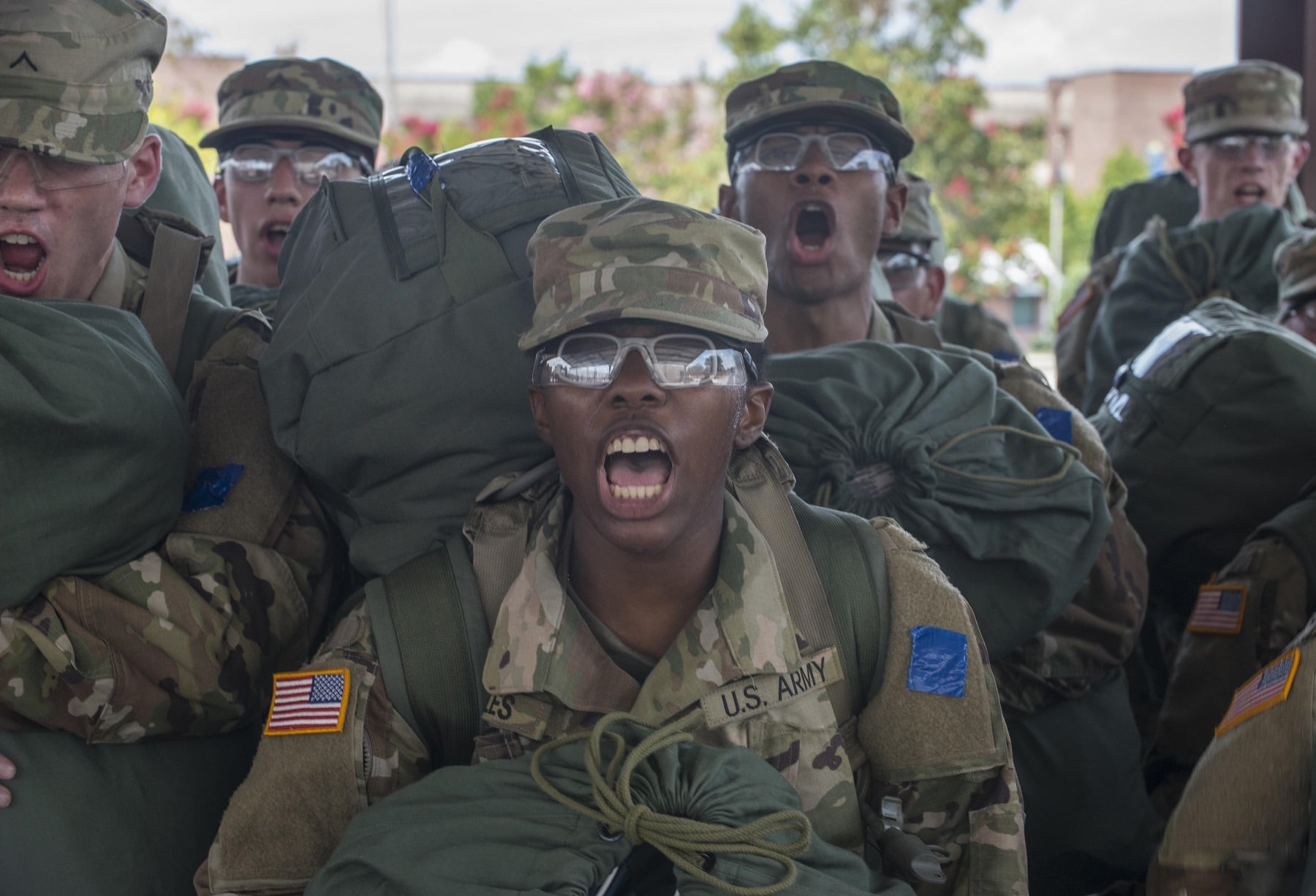The Army’s Center for Initial Military Training has launched a study to take a closer look at how it makes and grows soldiers.
The study is underway largely because the Army is growing again, and there is increasing concern about the fitness and readiness of newly minted soldiers as they arrive at their first assignments.
The review will include basic combat training, advanced individual training and basic officer leadership training, said Maj. Gen. Malcolm Frost, commander of the Center for Initial Military Training. It also will look at how the Army selects drill sergeants and AIT platoon sergeants and their daily work load, he said, during an interview on Sept. 28.
“The No. 1 thing [units] expect from a new recruit or from a new solder is a disciplined soldier,” Frost said. “No. 2 is a physically fit soldier.”
To deliver that, Frost is considering a program of instruction overhaul that would focus more on “soldierization” and physical endurance.
“The operational force tells us that they will train them on the specifics they need for warrior tasks and battle drills,” he said.
CIMT is looking at what soldiers absolutely must know when they leave basic and AIT, and what they need to make up for, based on unit feedback.
“We need to be able to deliver soldiers that can shoot, move, communicate, treat — meaning [the] right weapons proficiency, medical proficiency, physical fitness, communications proficiency — those big four, which every soldier needs to know,” Frost said. “They need to be physically fit, like I talked about, but they need to be disciplined.”
And then they need some basic institutional knowledge.
“They need to have an esprit [de corps] and an ethos,” he said. “They need to be trained in [sexual harassment and assault response and prevention]. And then, quite frankly, they need to be confident coming out that they are a soldier. Everything else beyond that, we have to look at.”
The review will begin in October at Fort Jackson, South Carolina, the Army’s biggest basic training post.
Longer basic?
Meanwhile, the Army is still toying with the idea of adding to basic training, in terms of time and curriculum.
In 2016, Training and Doctrine Command’s top enlisted soldier told Army Times that the organization was considering adding more time to the 10-week program to increase readiness.
RELATED

“We are looking to add more time so they can do critical thinking, become educated and not trained,” said Command Sgt. Maj. Dave Davenport. “We can focus on character development, physical fitness, marksmanship. It’s making a bigger investment of time in our new recruits.”
But that idea fell by the wayside in early 2017, when the Army was tasked with bringing in 6,000 more soldiers than originally planned for the fiscal year.
RELATED

It’s still under consideration, though, Frost said, in addition to the possibility of a multi-day culminating event designed to solidify a recruit’s sense of having become a soldier.
“Should there be a field training exercise?”he said. “Where you come out and say, “Wow, that was hard. That sucked. But I am proud, and I am a soldier.‘“
‘No. 1 sphere of influence’
CIMT is also looking at leadership to improve the initial training environment.
“I am trying to assess the enterprise through what I think is the No. 1 sphere of influence in that enterprise, and that is the drill sergeant and the AIT platoon sergeant,” he said.
That will involve a newly commissioned study to look at the ratio of leaders to recruits and soldiers. There is a one-to-seven ratio of drill sergeants to recruits, but one-to-40 at AIT, Frost said.
“Is that right?” he said. “I am looking at how much load we are putting in the drill sergeant‘s and the AIT platoon sergeant’s rucksack, and how many things are incrementally affecting them, burdening them, and/or taking away from their ability to do their job, and what impact and what risks are there in the training base.”
As the Army continues to grow, it has to pull in more drill sergeants and AIT platoon sergeants so it can keep the same standards but not burn out those noncommissioned officers.
Especially as the Army is anticipating a continued uptick in end strength over the next few years, Frost said.
“As we look at this end strength increase, and we look at what [Congress] is looking at what the next couple of fiscal years are going to look like from an end strength increase standpoint — how do we prevent the whiplash of the up and down. to be able to anticipate and level off better, and have the right number of basic combat training companies and AIT companies?” Frost said. “Because it is a long lead-time to train a drill sergeant.”
Meghann Myers is the Pentagon bureau chief at Military Times. She covers operations, policy, personnel, leadership and other issues affecting service members.





